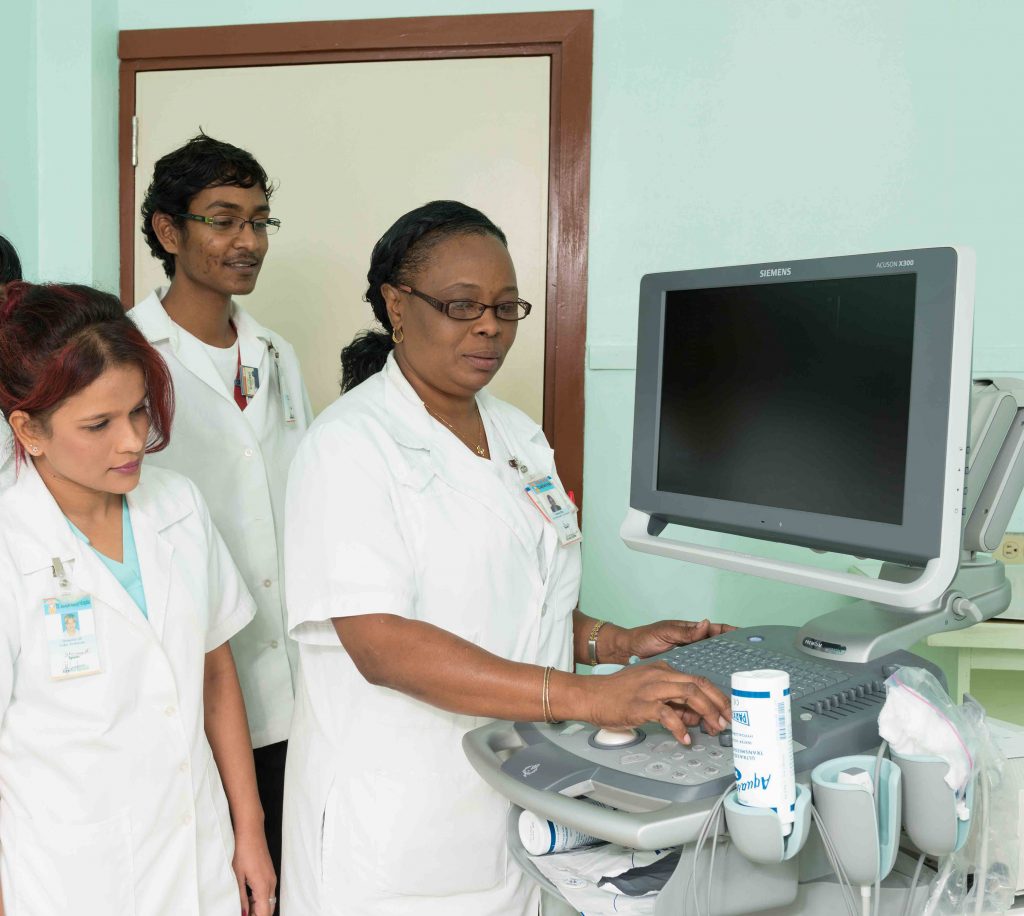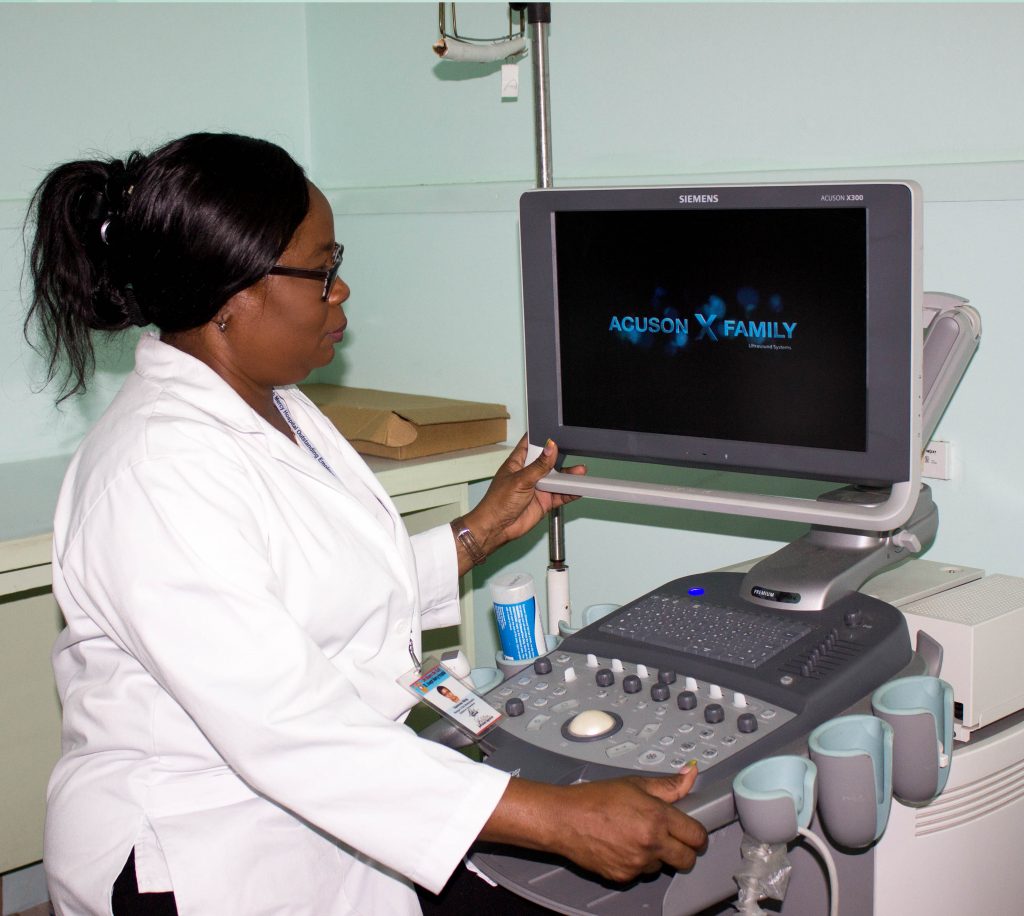Ultrasound Scan
Ultrasound Scan
An ultrasound scan, sometimes called a sonogram, is a procedure that uses high frequency sound waves to create an image of part of the inside of the body, such as the heart. As sound waves are used rather than radiation, the procedure is safe. Ultrasound scans are commonly used during pregnancy to produce images of the baby in the womb. Ultrasound scans can also be used to:
- examine internal organs of the body such as the liver, kidneys, and bladder
- help guide a surgeon performing some types of biopsy
Read more information about when an ultrasound scan is used. What happens during an ultrasound scan? Most ultrasound scans don’t take long to perform, typically between 15 and 45 minutes. Your ultrasound scan will generally take place in an X-ray department in the hospital and be performed either by a doctor, who will provide a diagnostic report, or by a sonographer. A sonographer is a specialist trained in the use of ultrasound, who will provide a descriptive report for the doctor to make a diagnosis. Preparing for an ultrasound scan Before having some types of ultrasound scan, you may be asked to follow certain instructions before the procedure, such as:
- drink water and not go to the toilet until after the test – this is to fill your bladder and may be needed before a scan of your unborn baby or your pelvic area
- avoid eating for several hours before the scan – this may be needed before a scan of your abdomen to lower the amount of air and gas in your stomach or bowel and enable your gallbladder to be better assessed
Depending on the area of your body being examined, the hospital may also ask you to remove some clothing and wear a hospital gown. A small handheld device called a transducer is placed onto your skin and moved over the part of the body being examined. A lubricating gel is put onto your skin to allow the transducer to move smoothly. This also ensures there is continuous contact between the sensor and the skin. The transducer is connected to a computer and a monitor. Pulses of ultrasound are sent from a probe in the transducer, through your skin, and into your body. They then bounce back from the structures of your body to be displayed as an image on the monitor. As well as producing still pictures, an ultrasound scan shows movement that can be recorded onto video. You should not feel anything other than the sensor and gel on your skin (which is often cold). If you are having a scan of your uterus, your full bladder may cause you a little discomfort. There will be a toilet nearby to empty your bladder once the scan is complete.


